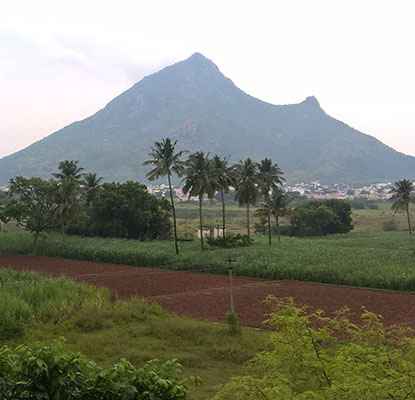.jpg)
Mount Everest
(29,029 ft) |
Mount Everest:
First Ascent on 5-29-1953 by Edmund Hillary & Tenzing Norgay.
News of the expedition's success reached London on the morning
of Queen Elizabeth II's coronation (June 2). Mt. Everest is Earth's
highest mountain above sea level. It's called "Deodungha" ("Holy Mountain") in Darjeeling
and Tibetan's Chomolungma means "Holy Mother". Southern part of Mt. Everest is regarded as
one of several "hidden valleys" of refuge designated by Padmasambhava,
a 9th-century "lotus-born" Buddhist saint. Miyolangsangma,
a Tibetan Buddhist "Goddess of Inexhaustible Giving", is believed to have lived at the top of Mt Everest.
Sherpa people believe that Mt. Everest and its flanks are blessed with spiritual energy,
and one should show reverence when passing through this sacred landscape. |
|
.jpg)
Mount Ararat
(16,854 ft) |
Mount Ararat: First Ascent on 10-9-1829 by Friedrick Parrot.
Ararat is a snow-capped & dormant compound volcano in the extreme east of Turkey.
It consists of two major volcanic cones: Greater Ararat, the highest peak in Turkey
and the Armenian plateau with an elevation of 16,854 ft; and Little Ararat, with an elevation of 12,782 ft.
Mt. Ararat has been accepted in Christianity as the resting place of Noah's Ark.
"And the ark rested in the seventh month, on the seventeenth day of the month, upon the mountains of Ararat."
(Genesis 8.4) Along with Noah's Ark,
it is depicted on the coat of arms of Armenia.
Early medieval historian Movses Khorenatsi wrote
in History of Armenia that after descending from his Ark, Noah & his family settled in Armenia.
"This makes Armenia the cradle of all civilisation."
|
.jpg)
Matterhorn
(14,692 ft) |
Matterhorn: First Ascent on 7-14-1865 by Edward Whymper,
which ended disastrously
when four of its members fell to their deaths on the descent.
The mountain is between Switzerland & Italy.
Its near-symmetrical pyramidal peak 14,692 ft high, making it one
of the highest summits in the Alps and Europe. Some 500 mountaineers since 1865
have perished while scaling the Matterhorn, a death toll nearly double that of Mount Everest.
I visited the sage Paul Brunton (PB) 14 times in
Switzerland. In August 1976, sleeping in
PB's Blonay apartment, had this dream— Even though I don't drive, found myself
behind the wheel cruising a road when suddenly Matterhorn appeared ahead.
I thought the car would crash head on into the mountain. At the last second,
it flew above and soared over the mountain. PB said my dream tells him
that I'm making spiritual progress in meditation. |
.jpg)
Mount Fuji
(12,389 ft) |
Mount Fuji: First Ascent in 663 A.D. by monk En no Odzunu.
Fuji located on Honshu, is the highest mountain in Japan (12,389 ft). Its name may be derived from Ainu aboriginal language meaning "fire mountain"
or Chinese (not + exhaust) or "never-ending". In Shinto mythology, Kuninotokotachi
is one of the two gods born from "something like a reed that arose from the soil" when the earth was chaotic. Numerous Shinto shrines and
Buddhist temples are located near the base of Mt. Fuji. On a clear day, the distinctive silhouette of Mt. Fuji can be seen from as far as
Tokyo (62 miles away). Every year some 300,000 people climb Mt. Fuji.
Hokusai's woodcut prints "36 Views of Mount Fuji" (1830-1832) honors
this national treasure. A 5th station plaque
honors British Rutherford Alcock for climbing Mt. Fuji. |
|
.jpg)
Mount Olympus
(9,573 ft) |
Mount Olympus:
First Ascent on 82-1913 by Christos Kakalo, Frederic Boissonnas, & Daniel Baud-Bovy. Mount Olympus is a
mountain of Macedonia & Thessaly, now Lacha. The ancients supposed that it touched the heavens with
its top, and from that circumstance, they have placed the residence of the gods there, and have made it
the court of Jupiter (Zeus).
It is about a mile and half in perpendicular height, and is covered with
pleasant wods, caves, and grottos. On the top top of the moutain, according to the notions of the poets,
there was neither wind nor rain, nor clouds, but an eternal spring.
(Homer's Iliad I)
from Lemprière's Classical Dictionary
(3rd Ed., 1984) p. 422. Gaskell on Mount Olympus: Symbol of the height of perfection & attainment;
or plane of atma, the summit of manifestation. |
|
.jpg)
Mount Sinai
(7,497 ft) |
Mount Sinai:
also known as Mount Horeb or Gabal Musa, is a mountain in the Sinai Peninsula of Egypt that is a possible
location of the biblical Mount Sinai, which is considered a holy site by the Abrahamic religions.
Mount Sinai is mentioned many times in Exodus and the Quran.
According to Jewish, Christian, and Islamic tradition, the biblical Mount Sinai
was the place where Moses received the 10 Commandments. Scholars date Moses
(1391-1271 B.C.) so he went up Mt. Sinai around this time. In Barbar Rosenstock's children's book
The Littlest Mountain (2011),
she writes that Mt. Sinai was chosen by God over
beautiful Mt. Carmel, taller Mt. Hermon (9,232 ft), and majestic Mt. Tabor, since it is the littlest & humblest of all. |
|

Mount Arunachala
(2,671 ft) |
Mount Arunachala: No record for first ascent.
Ramana Maharshi, one of 20th century greatest sages,
came to Arunachala Hill in Tiruvannamalai, South India,
at age 17 (Sept. 1, 1896) after his self-enlightenment, and stayed here all his life (53 years) to teach others.
Introduced to the West by Paul Brunton's
A Search in Secret India (1935).
French photographer Henri Cartier-Bresson
saw a comet streak across the sky and disappear behind Arunachala Hill
when Ramana died (4-14-1950, 8:47 pm).
Ramana gave the meaning of Arunachala: Aruna = Red, bright like fire. This is Jnanagni (Fire of Wisdom),
neither hot nor cool. Achala = a hill. So Arunachala is "Hill of Wisdom".
Two books with Arunachala on the cover
(1,
2).
Five Hymns to Arunahala
show how devoted Ramana was to this mountain.
|
|
.jpg)
.jpg)
![]()
![]()
 (6-22-2018)
(6-22-2018)
.jpg)
.jpg)
.jpg)
.jpg)
.jpg)
.jpg)
.jpg)
